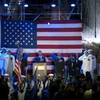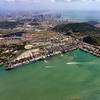Bulk Transport Leadership: Dan Martin
Drought and ensuing low river levels continue to affect the inland industry. Low water between St. Louis and Cairo, Illinois has threatened traffic on the Mississippi River since December.
For months, dredging operations have slowed vessels at points along the river's course. Since December, a stretch at Thebes, Illinois, has been shut for much of each day as the U.S. Army Corps of Engineers removes rock pinnacles. A panel of five executives weighed in on a host of topics regarding inland transportation as part of a round table discussion published in the February print edition of Marine News. Shown here are the comments of Dan T. Martin, Senior Vice President and Chief Commercial Officer at Ingram Barge Company in Nashville:
How have reduced Mississippi River drafts have affected your operations, safety, and your bottom line?
Dan Martin: Barge transportation is the safest mode for moving bulk commodities. Faced with very challenging, operating conditions throughout the drought of 2012, Ingram continued to operate on the Mississippi River with stellar safety results. The necessity to frequently operate with drafts as shallow as 8 feet, when 10 feet is normal, certainly impacted our bottom line, with each foot of draft representing nearly a 200-ton loss of cargo. Our tow sizes, which normally consist of 30 to 35 barges, were often reduced to 20 or 25 barges. Together, these factors combined to make our operations much more costly and less efficient. That being said, we were able to transport cargoes for our customers in a very reliable fashion.
Is the Army Corps doing enough to facilitate Mississippi River transport?
Martin: The decision by the Corps to expedite the removal of rock pinnacles in the Thebes to Grand Tower, Ill. stretch has proven critical to allowing navigation to continue between St. Louis and Cairo, Ill. Ingram and the entire navigation industry are grateful for the efforts of the Obama Administration, Illinois Senator Dick Durbin and many other senators, members of Congress, and state governors, who have focused on the importance of maintaining barge traffic on the nation’s busiest water transportation artery. At the same time, we believe the Corps should be open to releasing more water from the Missouri River, if necessary, to permit operations at a nine-foot draft throughout the winter months. Without such assurance, we lack certainty that the nation’s most important waterway can continue to effectively move its commerce.
How will reduced barge traffic impact the national economy this winter? To what extent will rail and trucks be used instead of barges?
Martin: In the event of an actual closure of the river, nearly $7 billion in key products, including corn, soybeans, coal, petroleum, chemicals and other commodities, would be put at risk. We're aware that some shippers are using rail cars and trucks to move their products but we have not seen this on a widespread basis. Trucks really are not a viable option for the volumes that move by water, and there are limited rail cars available to fill the gap.
How difficult will it be to comply with the impending Subchapter M rule? Will we see more consolidation within the industry because of it?
Martin: We're hopeful that the regulations, when finally issued, will reflect a balanced, reasonable approach that most operators will be able to comply with. Certainly, the regulations will create more complexity, and some smaller operators may decide that these new burdens are sufficient motivation to exit the business.
Is the inland industry prepared for increased traffic from the Panama Canal?
Martin: The barge industry is definitely ready but we’re a bit concerned that dredging, needed to deepen our nation’s ports to the necessary 50-foot depth, will not be completed in time to allow post-Panamax vessels to fully access the New Orleans to Baton Rouge corridor.














